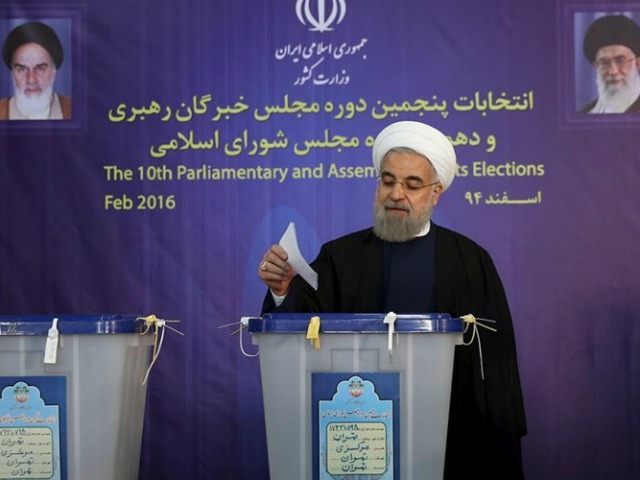The art of post-election spin is alive and well in Iran, where both reform-minded “moderates” and “hardliners” claimed victory in the parliamentary elections.
The moderates appear to have done very well in the big cities, including Tehran, where The New York Times reports all 30 parliamentary seats went to reformist-moderate candidates. Only two seats in Tehran were held by reformists before this election.
“All these people, the majority of the eligible voters, have spoken out against the hard-liners,” said activist Saeed Laylaz, who saw the election as a big win for President Hassan Rouhani, whose “power and influence have now increased.”
Rouhani saw it that way, as well. “The people showed their power once again and gave more credibility and strength to their elected government,” he declared in a statement.
The election was widely seen as a referendum on Rouhani’s leadership after the Iranian nuclear deal was finalized.
Reuters noted:
Most of the lawmakers who failed to win re-election to the new Parliament strongly opposed the nuclear deal, including Mehdi Kouchakzadeh, who called Foreign Minister Mohammad Javad Zarif a traitor, and Rouhollah Hosseinian, who threatened to bury the negotiators under cement for agreeing to concessions to world powers.
Lawmakers opposed to Iran’s post-sanctions oil contracts also fared poorly.
Mostafa Kavakebian, a newspaper editor who won one of the parliamentary seats in Tehran, said the most important outcome of the election was that reformists would no longer be marginalized as “seditionists or infiltrators.”
However, news organizations linked to the hardliners claimed they cleaned up in rural elections and would prove to be the big winners in the election, once the final tally was complete.
Reuters’ tally of the official results had “conservatives” retaining the edge in Parliament with 40 percent of the seats, compared to 30 percent for reformists and 17 percent for independents. Prior to this election, the reformists held less than 10 percent of parliamentary seats. The reformists are hoping the independents will align with them, although that is evidently difficult to predict at this point, with so little known about many of the new lawmakers.
Reuters quoted Hossein Shariatmadari, editor-in-chief of a newspaper aligned with the hardline anti-American Ayatollah Khamenei, describing the moderates’ claims of victory as an “illusion” and asserting “the structure of Iran’s ruling system is such that no political faction can change the main policies rooted in its core principles.”
Supreme Leader Khamenei himself limited his comments on the election to praise for the high turnout, which stood at roughly 62 percent of eligible voters.
Two separate elections were held in Iran: one for Parliament, the other for the Assembly of Experts, a clerical body whose duties include choosing the next supreme leader. The discharge of this duty may be imminent, as CNN noted Ayatollah Ali Khamenei is 76, and rumored to be in ill health. Several of Khamenei’s key allies were defeated in the election.
Moderates reportedly did well in the Assembly of Experts, too, with The Wall Street Journal reporting all but one of Tehran’s 16 seats went to moderate candidates.
The WSJ suggested the moderate-reformist victories in these elections could represent the return of strength and confidence to their movement after the brutal crackdown on the “Green Revolution” in 2009 and the suspicious re-election of hardline President Mahmoud Ahmadinejad, events which prompted many reformists to stay away from the polls in 2012.
Another source of reformist strength was the Iranian youth vote, which reportedly included nearly 40 percent of the population and is suffering from very high unemployment rates.
The WSJ cited Rouhani’s promises to “deliver financial dividends” from the nuclear deal, to help cure “double-digit unemployment, high inflation and a dearth of foreign investment that have plagued the country because of sanctions.”
Those promises include an extremely high eight percent annual growth target, double what the Iranian economy is currently averaging after the release of sanctions.

COMMENTS
Please let us know if you're having issues with commenting.